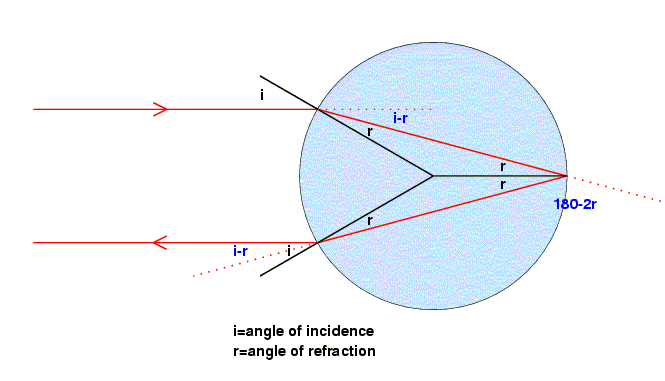Brandes's Theory
Early in the nineteenth century, Brandes asserted that external and internal reflections by the dewdrop were the cause of the heiligenschein. Here, I will discuss why this can not be so.
A ray of sunlight entering a drop of water is refracted and reflected as follows: It is first refracted at the front surface of the drop. At the back surface of the drop, the light is reflected and returns to the front surface, where it again undergoes refraction as it moves from air into water.

The deviation, D, produced by two refractions and one internal reflection in a sphere is given by
=180-2r+2i-2r
=180+2i-4r
So
For back reflection to occur at grazing incidence, i=90, and n=2cos45=√2. For it to occur when i=0, n=2cos0=2. So n must between √2, which is approximately 1.414, and 2. When n=1.33 (the angle of incidence for red light traveling from air to water), no back reflection can occur. Blue light has the highest index of refraction (n=1.344) but this is still not high enough to meet the requirements for back reflection to occur.